We need your consent to use the individual data so that you can see information about your interests, among other things. Click "OK" to give your consent.
ASTM D5866-12
Standard Test Method for Neps in Cotton Fibers
STANDARD published on 1.12.2012
The information about the standard:
Designation standards: ASTM D5866-12
Note: WITHDRAWN
Publication date standards: 1.12.2012
SKU: NS-32872
The number of pages: 3
Approximate weight : 9 g (0.02 lbs)
Country: American technical standard
Category: Technical standards ASTM
The category - similar standards:
Annotation of standard text ASTM D5866-12 :
Keywords:
cotton, neps, slivers, ICS Number Code 59.060.10 (Natural fibres)
Additional information
| Significance and Use | ||||||||
|
5.1 Entangled cotton fibers that form neps have two sources: those that occur naturally as the cotton fiber develops on the plant into lint that is ready to be harvested and those that occur from mechanical action in harvesting, ginning, cleaning, carding or from a combination of mechanical action. 5.2 This test method does not identify whether the neps counted and measured are a result of seed variety, environmental influences, type of harvesting, or a result of mechanical processing. However, this information can be obtained from studies where samples are taken from plants in the field before harvesting and ginning, before and after cleaning, and carding before spinning. 5.3 The measurement of nep size and quantity going into, and coming out of, a fiber processing stage are commonly used to make adjustments in the processing machinery to reduce or eliminate the generation of mechanical neps. Neps that remain in spun yarns have a direct influence on neps in fabrics. For almost all types of yarn or fabric, neps are considered defects. 5.4 This test method provides a consistent and repeatable measurement of fiber nep count and size. Check cotton samples supplied by the manufacturer are used to verify consistent measurement levels and laboratory-to-laboratory precision. 5.5 This test method is considered satisfactory for acceptance testing when the levels of the laboratories are controlled by the use of the same reference standard cotton samples because the current estimates of between-laboratory precision are acceptable under these conditions. If there are differences of practical significance between reported test results for two laboratories or more, comparative tests should be performed to determine if there is a statistical bias between them using competent statistical assistance. At a minimum, ensure the test samples to be used are as homogeneous as possible, are drawn from the material from which the disparate test results were obtained, and are randomly assigned in equal numbers to each laboratory for testing. The test from the two laboratories should be compared using a statistical test for unpaired data, at a probability level chosen prior to the testing series. If a bias is found, either its cause must be found and corrected, or future test results for that material must be adjusted in consideration of the known bias. |
||||||||
| 1. Scope | ||||||||
|
1.1 This test method covers the measurement of the quantity and size of neps in cotton using various instruments. 1.2 This test method is intended for testing ginned cotton and cotton taken from various fiber processing stages. 1.3 The values stated in SI units are to be regarded as standard. No other units of measurement are included in this standard. 1.4 This standard does not purport to address all of the safety concerns, if any, associated with its use. It is the responsibility of the user of this standard to establish appropriate safety and health practices and determine the applicability of regulatory limitations prior to use. |
||||||||
| 2. Referenced Documents | ||||||||
|
Similar standards:
Historical
1.7.2009
Historical
1.1.2013
Historical
1.1.2013
Historical
1.7.2009
Historical
1.7.2012
Historical
1.7.2012
We recommend:
Technical standards updating
Do you want to make sure you use only the valid technical standards?
We can offer you a solution which will provide you a monthly overview concerning the updating of standards which you use.
Would you like to know more? Look at this page.



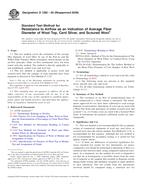 ASTM D1282-05(2009)..
ASTM D1282-05(2009).. ASTM D1283-05(2013)..
ASTM D1283-05(2013)..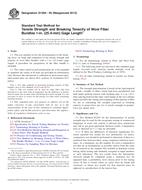 ASTM D1294-05(2013)..
ASTM D1294-05(2013)..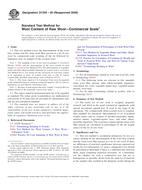 ASTM D1334-05(2009)..
ASTM D1334-05(2009)..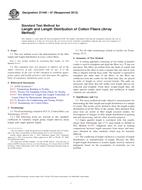 ASTM D1440-07(2012)..
ASTM D1440-07(2012)..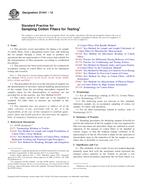 ASTM D1441-12
ASTM D1441-12
 Cookies
Cookies
